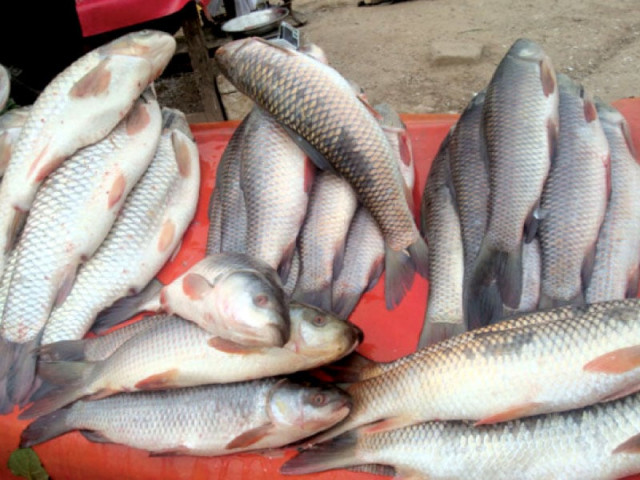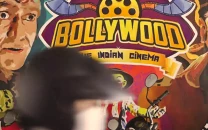Japanese fish survive 5,000-mile trip across Pacific in tsunami boat
Questions of how the fish found enough food to survive the trip in these waters have been raised.

Fish out of water. PHOTO: FILE
The batch of striped beak fish - five in all - were discovered submerged in the hold of the 20-foot-long fishing skiff, dubbed the Sai-shou-maru, on Long Beach in southwestern Washington.
The vessel, found beached right-side-up, was confirmed this week to have originated from the region of northern Japan devastated in the immense tidal surge generated by the March 2011 Fukushima earthquake.
Other boats carried away by the tsunami have previously washed up along the US Pacific Northwest and Alaska, as have chunks of piers and large quantities of other debris. But the fish found aboard the Sai-shou-maru are the first vertebrates - animals with backbones - known to have made the voyage.
Marine biologists studying the phenomenon are puzzled over precisely how striped beak fish, natural denizens of warmer, shallow southern Japanese waters, ended up as live stowaways in the well of the boat, and how they endured a two-year journey across the ocean.
"It is quite remarkable," Curt Hart, a spokesman for the Washington state Department of Ecology, told Reuters. "Everyone is very amazed that these fish survived for two years in that hold."
The fish were apparently swept up with the skiff as it was washed down the coast of Japan and out into the Pacific.
Scientists surmise that the fish made their home beneath the boat for much of the trip as it drifted upside down and partially submerged, feeding on other organisms that became encrusted or otherwise attached to the inverted vessel. Then they might have been scooped up into the skiff's hold when wind or waves righted the vessel, Hart said.
Nourishment mystery
The middle of the Pacific is far less rich in nutrients than coastal waters, raising questions of how the fish found enough food to survive the trip, said Jeff Adams, an expert at Washington Sea Grant, an agency supporting marine research.
The 6-inch-long striped beak fish, named for their protruding mouths and black-and-white striped markings, were the most surprising of an estimated 30 to 50 species of marine organisms that hitchhiked across the Pacific with the skiff.
Other stowaways included various types of algae, anemones, crabs, marine worms and shellfish.
Many were believed to be non-native species, and all were treated as potentially invasive - capable of displacing native organisms and disrupting the natural ecological balance if allowed to escape into the environment and propagate.
As a precaution, state officials swiftly removed the Sai-shou-maru from the shoreline before samples of organisms were collected for study, and the boat was scraped and steam-cleaned, Hart said.
Four of the fish found alive in the boat on March 22 have since died, and the lone surviving specimen has been moved to an aquarium in Seaside, Oregon.
The Sai-shou-maru is not the only Noah's ark of potential invasive species carried to the US West Coast by the tsunami. Several more Japanese boats have washed ashore since last year in Washington, Oregon and California, and a fishing vessel found drifting off Alaska was scuttled by the Coast Guard.
Dozens of non-native and potentially invasive species - more than hitched a ride aboard the Sai-shou-maru - were previously found attached to two large hunks of piers that washed up, one in Oregon and one in Washington, Hart said.



















COMMENTS
Comments are moderated and generally will be posted if they are on-topic and not abusive.
For more information, please see our Comments FAQ